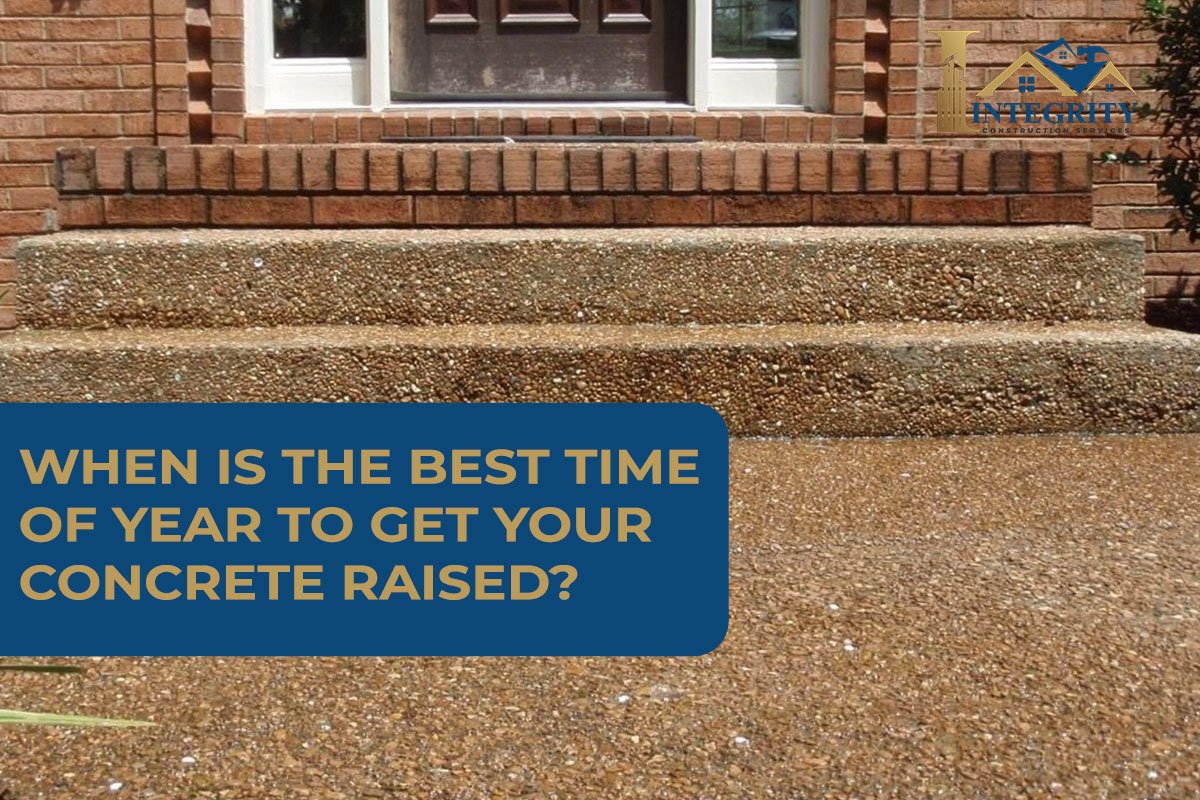Concrete raising, also known as slab jacking or concrete leveling, is a smart way to restore sunken or uneven concrete without replacing it. If you’ve noticed your driveway, sidewalk, or patio looking a little lopsided, timing your repair can make a huge difference. Weather, soil conditions, and temperature all play a role in the success and longevity of the repair. But when is the best time to get your concrete raised? In this post, we’ll break it down season by season, help you plan, and explain why calling in the pros at the right moment can save you time and money.
Spring: The Sweet Spot for Concrete Raising
Spring is often considered the ideal time for concrete raising, and for good reason. As the ground begins to thaw from winter, moisture levels stabilize, and the soil beneath your slabs becomes more predictable. This creates favorable conditions for polyurethane foam or grout injections used in the concrete lifting process.
Additionally, spring temperatures are typically mild, which helps both the materials used and the concrete itself cure properly. Tackling repairs early in the year also helps you avoid the rush later in the season, ensuring availability and quicker turnaround times. If your concrete suffered damage during the winter freeze, spring is the perfect time to address it. Check out our concrete repair solutions to see how we can help get your surfaces back in shape.
Summer: Good for Quick Curing—But Watch the Heat
Summer is another popular time for concrete raising, especially in regions where spring remains wet or unpredictable. The consistent dry weather helps the repair materials bond quickly and efficiently. You also won’t have to worry about surprise snow or frozen ground interfering with the job.
However, in very hot climates, concrete can dry too quickly, leading to surface cracking if not managed properly. A professional contractor will know how to handle high heat conditions, using additives and timing techniques to control the curing process. Planning early morning or evening appointments during peak summer can make the process smoother.

Fall: A Great Backup Window
Fall often brings ideal working conditions—cooler temperatures, dry ground, and fewer scheduling conflicts as the busy season winds down. If you didn’t get to your concrete issues during the spring or summer, fall gives you one last good chance before winter sets in.
It’s especially important to level concrete before winter if you’re already seeing pooling water or tripping hazards. As moisture freezes and thaws, the expansion and contraction can make existing problems worse. A fall repair helps prevent further damage during the colder months and ensures your property stays safe through the winter.
Winter: Risky but Not Impossible
Winter is typically not the best time for concrete raising. Freezing temperatures make it harder to inject leveling materials properly and keep them from curing effectively. Ground that is frozen or snow-covered also makes it difficult to evaluate the full extent of concrete damage.
However, in some milder climates—or with professional-grade equipment—repairs can still be made in the winter. If you absolutely can’t wait and the ground isn’t frozen solid, talk to a concrete raising expert about your options. Just be aware that you may pay a premium or face longer wait times.
Why Soil Conditions Matter Year-Round?
No matter the season, soil conditions play a critical role in how well your concrete raising project performs. During rainy months, waterlogged soils can be unstable. In drier seasons, overly compacted or shifting soil can cause uneven lifting.
Professionals assess the moisture content and stability of the soil before beginning work. This helps them choose the right material and technique, like foam versus grout injection, for the job. If the ground is too unstable, they may recommend postponing until conditions improve to ensure a lasting repair.
Plan Ahead and Book Early
Spring and early summer are peak seasons for concrete raising companies. If you wait too long to schedule your project, you could face delays or limited availability. That’s why it’s smart to book early, especially if you’re dealing with damage caused by winter freeze-thaw cycles.
By planning ahead, you get your pick of appointment times and can take advantage of seasonal promotions. You’ll also give your repaired surfaces time to settle and cure before heavy use, whether that’s hosting summer cookouts or getting ready for back-to-school foot traffic.
Climate Makes a Difference

The best time to lay concrete can vary depending on your local climate. In the Midwest or Northeast, for instance, spring and fall are generally preferred. In Southern or Southwestern states where winters are mild, concrete lifting might be possible year-round.
Always consult a local concrete professional familiar with your area’s weather patterns. They’ll be able to guide you toward the best time and method for your specific environment. We understand how regional weather affects concrete and can advise on the best seasonal window for your project.
Don’t Wait If It’s a Safety Issue
While timing is important, don’t wait for the “perfect” season if your concrete poses a safety risk. Tripping hazards, pooling water, or dangerously uneven surfaces should be addressed as soon as possible.
Delaying repairs can lead to liability issues, water damage, or further settling. Concrete problems never fix themselves, and they usually get worse over time. If in doubt, reach out to a professional for an inspection and advice on whether immediate action is needed.
Wrap-Up: Get It Done at the Right Time
So, when is the best time to get your concrete raised? Ideally, spring and fall offer the best conditions for most regions. But summer can also work, and winter may still be an option in warmer climates. More importantly, don’t ignore concrete issues that pose safety risks or drainage problems—those require prompt attention, regardless of the season.
The key to a successful concrete lifting job lies in timing, soil conditions, and professional guidance. Contact us to schedule your consultation and get expert recommendations tailored to your property.
FAQs
1. Can I raise concrete in the winter?
In some warmer climates or with professional equipment, concrete can be raised in winter, but it’s generally less ideal.
2. Why is spring the best time for concrete raising?
Spring offers balanced soil moisture and mild temperatures, making it easier to stabilize and lift sunken slabs.
3. How long does concrete raising take?
Most jobs take just a few hours, but scheduling and curing times depend on seasonal conditions and soil stability.
4. Should I delay repairs if it’s too hot or cold?
It depends on severity. If the concrete poses safety risks, it’s best to consult a professional regardless of the weather.

